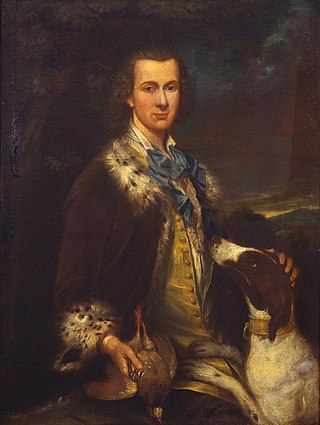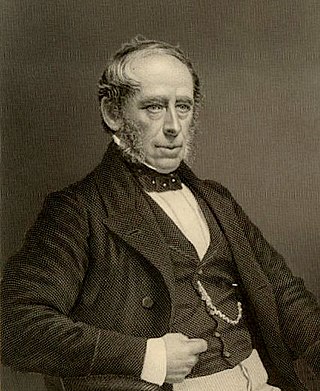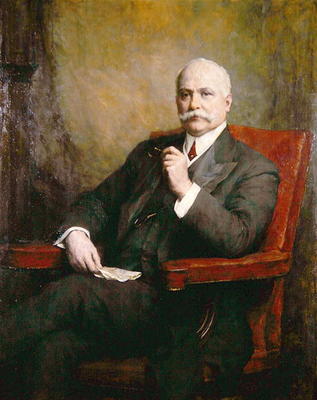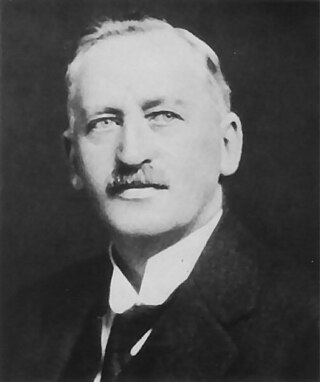
Earl of Rosslyn is a title in the Peerage of the United Kingdom. It was created in 1801 for Alexander Wedderburn, 1st Baron Loughborough, Lord Chancellor from 1793 to 1801, with special remainder to his nephew Sir James St Clair-Erskine, as Wedderburn had no surviving issue of his own. Wedderburn had already been created Baron Loughborough, of Loughborough in the County of Leicester, in the Peerage of Great Britain in 1780, with normal remainder to the heirs male of his body, and Baron Loughborough, of Loughborough in the County of Surrey, in the Peerage of Great Britain in 1795, with the same remainder as the earldom. The 1780 barony became extinct upon his death, but the 1795 barony and the earldom passed, by the special remainder, to his nephew, who thus became the second Earl of Rosslyn. The second Earl was a Lieutenant-General in the Army and also held political office as Lord Privy Seal and Lord President of the Council.

Earl of Romney is a title that has been created twice.

Earl of Limerick is a title that has been created twice in the Peerage of Ireland, associated first with the Dongan family, then with the Pery family. It should not be confused with the title Viscount of the City of Limerick held by the Hamilton family also Earls of Clanbrassil.

Earl of Lonsdale is a title that has been created twice in British history, firstly in the Peerage of Great Britain in 1784, and then in the Peerage of the United Kingdom in 1807, both times for members of the Lowther family.

Baron Kilmaine is a title that has been created twice, both times in the Peerage of Ireland. The first creation came in 1722 in favour of the soldier the Hon. James O'Hara. Two years later he succeeded his father as Baron Tyrawley. However, both titles became extinct on the second Baron Tyrawley's death in 1773 without legitimate sons.

Baron Hampton, of Hampton Lovett and of Westwood in the County of Worcester, is a title in the Peerage of the United Kingdom. It was created in 1874 for the Conservative politician Sir John Pakington, 1st Baronet.
Baron Hayter, of Chislehurst in the County of Kent, is a title in the Peerage of the United Kingdom. It was created in 1927 for the businessman Sir George Chubb, 1st Baronet. He had already been created a baronet of Newlands in the Baronetage of the United Kingdom in 1900. Chubb was chairman and managing director of the firm Chubb and Sons Lock and Safe Co Ltd, established by his grandfather Charles Chubb in the early 19th century. "Hayter" was the maiden name of George Hayter Chubb's mother, and was selected in preference to "Chubb", as it was not considered appropriate for names of corporations to be attributed to members of the House of Lords. He was succeeded by his son, the second baron. He was managing director of Chubb and Sons Lock and Safe Co Ltd. His son, the third baron, was managing director and chairman of Chubb and Sons Lock and Safe Co Ltd and also served as deputy chairman of the House of Lords from 1981 to 1995. As of 2014 the titles are held by the latter's son, the fourth baron, who succeeded in 2003.

Baron Hesketh, of Hesketh in the County Palatine of Lancaster, is a title in the Peerage of the United Kingdom. It was created in 1935 for Sir Thomas Fermor-Hesketh, 8th Baronet, who had previously briefly represented Enfield in the House of Commons as a Conservative. As of 2010 the titles are held by his grandson, the third Baron, who succeeded his father in 1955. Lord Hesketh held junior ministerial positions in the Conservative administrations of Margaret Thatcher and John Major. However, he lost his seat in the House of Lords after the House of Lords Act 1999 removed the automatic right of hereditary peers to sit in the upper chamber of Parliament.

Baron Glentoran, of Ballyalloly in the County of Down, is a title in the Peerage of the United Kingdom. It was created on 8 July 1939 for the Unionist politician Herbert Dixon. In 1950 he also succeeded his elder brother as third Baronet, of Ballymenock. His son, the second Baron, was also a politician and served as the last Speaker of the Senate of Northern Ireland. As of 2017 the titles are held by the latter's son, the third Baron, who succeeded in 1995. He is a former Olympic bobsleigh gold medallist as well as a soldier, businessman and politician. Lord Glentoran was one of the ninety elected hereditary peers who remain in the House of Lords after the passing of the House of Lords Act 1999, and sat on the Conservative benches until his June 2018 retirement under the House of Lords Reform Act 2014.

Baron Jeffreys is a title that has been created twice, once in the Peerage of England and once in the Peerage of the United Kingdom. The first creation came in the Peerage of England on 16 May 1685 when the lawyer and later Lord Chancellor, Sir George Jeffreys, 1st Baronet, was made Baron Jeffreys, of Wem. He had already been created a Baronet, of Bulstrode in the County of Buckingham, in the Baronetage of England in 1681. The titles became extinct on the death of his son, the second Baron, in 1702, who had no male heir: his daughter, the writer Henrietta Fermor, married the 1st Earl of Pomfret. The estates passed to Jeffreys' widow, Lady Charlotte Herbert, who later remarried as Viscountess Windsor.
Baron Selsdon, of Croydon in the County of Surrey, is a title in the Peerage of the United Kingdom. It was created on 14 January 1932 for the Conservative politician Sir William Mitchell-Thomson, 2nd Baronet. His son, the second Baron, was a successful racing driver, winning the 1949 24 Hours of Le Mans in the first Ferrari. As of 2009 the titles are held by the second Baron's only son, the third Baron, who succeeded in 1963. He is one of the ninety elected hereditary peers that remain in the House of Lords after the House of Lords Act of 1999. Lord Selsdon sits on the Conservative benches. The Mitchell-Thomson Baronetcy, of Polmood in the County of Peebles, was created in the Baronetage of the United Kingdom on 26 September 1900 for the first Baron's father, Sir Mitchell Mitchell-Thomson, Lord Provost of Edinburgh from 1897 to 1900.

Baron St Helens is a title that has been created three times, once in the Peerage of Ireland and twice in the Peerage of the United Kingdom.

Baron Rea, of Eskdale in the County of Cumberland, is a title in the Peerage of the United Kingdom. It was created in 1937 for the businessman and Liberal politician Sir Walter Rea, 1st Baronet, who had earlier represented Scarborough, Bradford North and Dewsbury in the House of Commons. He had already been created a Baronet, of Eskdale in the County of Cumberland, in 1935. He was succeeded by his eldest son, the second Baron. During the Second World War he served as personal staff officer to Brigadier Colin Gubbins, the Head of SOE, a key British intelligence and guerrilla operations agency. Lord Rea served as Leader of the Liberal Party in the House of Lords from 1955 to 1967. His daughter, the Right Hon. Ann Felicity Rea, married SOE veteran Malcolm Munthe in 1945. His nephew, the third Baron, who succeeded in 1981, was a physician. He was one of the ninety elected hereditary peers elected to remain in the House of Lords after the passing of the House of Lords Act 1999, and sat on the Labour benches. As of 2020 the titles are held by his son, the fourth Baron, who succeeded his father in that year.
Baron Rathcavan, of The Braid in the County of Antrim, is a title in the Peerage of the United Kingdom. It was created on 11 February 1953 for the Unionist politician Sir Hugh O'Neill, 1st Baronet. He had already been created a Baronet, of Cleggan in the County of Antrim, on 17 June 1929. O'Neill was the third son of Edward O'Neill, 2nd Baron O'Neill and the uncle of the Prime Minister of Northern Ireland Terence O'Neill, Baron O'Neill of the Maine. Lord Rathcavan was also a male-line descendant of Edward Chichester, 1st Viscount Chichester. He was succeeded by his eldest surviving son, the second Baron. He succeeded his father as Unionist Member of Parliament for Antrim in 1952, a seat he held until 1959, and was later a member of the Parliament of Northern Ireland. As of 2014 the titles are held by his son, the third Baron, who succeeded in 1994.
Baron Harvey of Tasburgh, of Tasburgh in the County of Norfolk, is a title in the Peerage of the United Kingdom. It was created on 3 July 1954 for the diplomat Sir Oliver Harvey on his retirement as British Ambassador to France. In November the same year he also succeeded his half-brother as fourth Baronet of Crown Point.

There have been three baronetcies created for persons with the surname Holden, all in the Baronetage of the United Kingdom. Two of the creations are extant as of 2010.
(George) Leighton Seager, 1st Baron Leighton of St Mellons CBE, known as Sir George Leighton Seager, 1st Baronet, from 1952 to 1962, was a Welsh shipping magnate.

Sir William Henry Seager was a Welsh shipping magnate and Liberal Party politician who spent four years as a Member of Parliament (MP).
There have been three baronetcies created for members of the Gore family, all in the Baronetage of Ireland. All three titles are extant. The family also holds two earldoms and a barony.

Earl of Arran is a title in the Peerage of Ireland. It is not to be confused with the title Earl of Arran in the Peerage of Scotland. The two titles refer to different places: the Aran Islands in Ireland, and the Isle of Arran in Scotland. The Irish earldom is held by the Gore family. The Scottish earldom is a separate title, held as a subsidiary title of the Duke of Hamilton.












